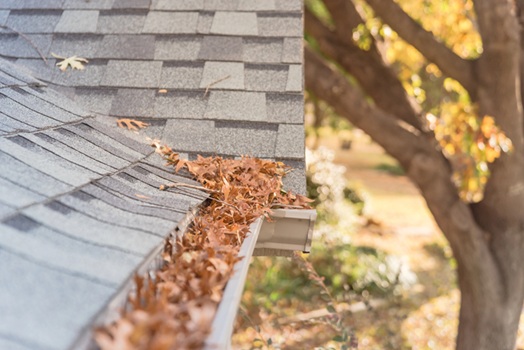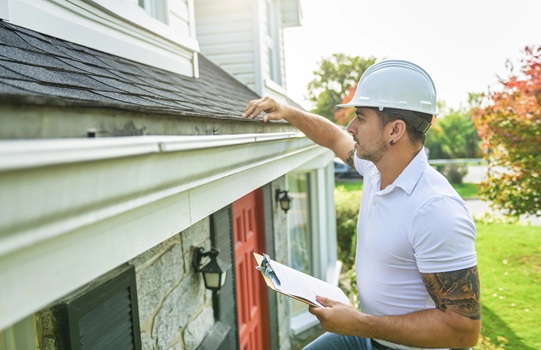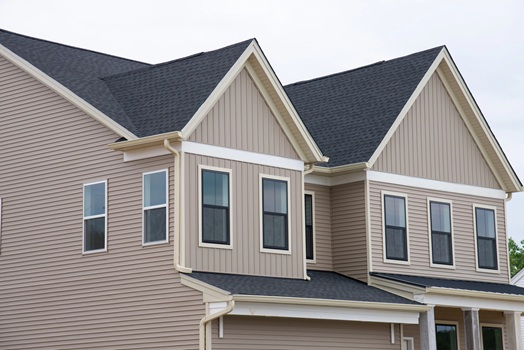
Regular gutter cleaning is one of the most underrated ways to protect your home from serious water damage. When gutters stay clear, rainwater moves safely away from your roof, walls, and foundation instead of soaking into places it does not belong. As a result, you reduce the risk of cracks, leaks, mould, and landscape erosion. Plus, you’ll avoid spending a fortune on repairs later.
Gutters sit high on the roofline. That’s why many homeowners in Greenville SC forget about them until water starts spilling over the edges. By that point, siding can already be stained and fascia boards may be starting to rot. This is why planning ahead, rather than reacting to obvious problems, is a much smarter and less stressful approach.
In addition, the work itself involves ladders, tools, and messy debris, so it is not a task to rush through. When you follow clear do’s and don’ts and build a simple routine, the entire process becomes safer. Also, it’s more efficient, and easier to manage over the long run.
Topics Covered in This Article
Why Gutter Cleaning Matters More Than You Think
When you treat roof and gutter maintenance services as a regular part of caring for your home, you strengthen your first line of defence against rain. Gutters can catch water from the roof and guide it into downspouts that discharge away from the structure. If they are blocked, that water spills over and begins attacking paint, trim, and soil around the foundation instead.
Clogs usually start small. Usually, it’s just a handful of leaves or twigs at a corner or near a downspout. Over time, more material builds up, and soon water has nowhere to go. That is where gutter solutions come in, helping you clear stubborn blockages before they cause major damage. When you stay proactive, you avoid the surprise of heavy rainfall pouring over the sides of your gutters.
Beyond damage prevention, consistent gutter cleaning helps preserve the look of your property. Clean rooflines, stain free siding, and dry walkways all contribute to a better first impression for guests and potential buyers. Therefore, this simple maintenance task quietly supports both the safety and the value of your home.
Gutter Cleaning Safety Basics You Cannot Ignore
Any time you are working at height, safety must come first. Before you start your next session of professional gutter cleaning in Greenville SC, inspect your ladder carefully. Look for broken rungs, loose parts, or worn feet. Then, place it on firm, level ground and follow the proper angle so it does not slip backward while you are working.

Roof inspection in Greenville SC
Because conditions can change quickly, it is always wise to have someone nearby while you are on the ladder. A helper can steady the base, pass tools, and keep an eye on pets or children while you focus on the task above. In many cases, this simple step transforms a risky job into a far more controlled and manageable situation in Greenville SC.
Protective gear is equally important. Sturdy work gloves keep your hands safe from sharp screws, jagged metal, and hidden branches. Meanwhile, safety glasses protect your eyes from sudden bursts of debris as you clear your gutter cleaning path. Non-slip footwear also reduces the risk of slipping on wet rungs or damp walkways around the home.
Smart Tools And Techniques For Easier Gutter Cleaning
Having the right equipment makes a noticeable difference when you are handling residential gutter care on a regular basis. A stable ladder, a scoop or small trowel, a bucket, and a garden hose with a spray nozzle form a solid basic kit. For many homes, these simple tools are more than enough to handle the bulk of leaf and twig build up.
However, when you are dealing with dense debris, packed sludge, or narrow sections of gutter, you may need more focused help. Special attachments, extension wands, or handheld tools designed for seasonal gutter maintenance tips can help you reach into tight corners without leaning too far from the ladder. With the right approach, you can clear stubborn material while still keeping your body in a safe position.
Once most of the debris is gone, a final rinse helps confirm that water is flowing properly. As you spray along the length of the system, watch how quickly water moves toward the downspouts. If you notice slow drainage or standing water during gutter cleaning, that may indicate sagging sections or hidden clogs inside the downspouts that need extra attention.
When Professional Help Makes Sense
There are times when calling in roof and gutter maintenance services is the smartest move you can make. If your home is more than one story tall, if the ground around the house is uneven, or if you are uncomfortable on ladders, hiring trained technicians is usually the safest choice. Their experience and equipment allow them to work efficiently while you stay on the ground.
In areas that see strong winds, heavy storms, or plenty of nearby trees, gutters can fill up quickly. When you notice repeated overflow in the same spots, even after you clear them, you may need more specialised clogged gutter solutions to locate hidden obstructions or repair sections that are no longer pitched correctly. Ignoring these warning signs can lead to serious water damage, especially during intense weather.
Sometimes, the smartest decision is to combine your own occasional gutter cleaning efforts with scheduled visits from a professional roofing contractor in Greenville SC. That way, you handle quick visual checks and light debris removal while the experts tackle more complex issues like re-securing hangers, sealing joints, or inspecting the roof edge for early signs of rot.
Protect Your Home With A Reliable Cleaning Plan
Over time, a simple routine for gutter cleaning will protect far more than just the metal channels along your roof. Clear gutters reduce the risk of leaks, protect your landscaping from erosion, and help keep water from seeping into basements or crawlspaces. Because of this, building a realistic schedule you can stick to is one of the best decisions you can make for your home in Greenville SC.
A good plan might include two thorough cleanings each year, once in late spring and once in late autumn, with quick visual checks after major storms. During these scheduled sessions, you can apply professional gutter cleaning Greenville SC standards by inspecting for sagging sections, loose brackets, and any signs of rust or damage that should be corrected before the next season.
To stay ahead of problems, many homeowners follow residential gutter care routines that include trimming back overhanging branches, checking downspout extensions, and making sure water goes far enough away from the foundation. These small habits, when added to your regular cleaning plan, go a long way toward preventing costly structural repairs later.
Finally, following trusted seasonal gutter maintenance tips from experienced companies like KM Roof and Home Repair can simplify your planning even more. For example, you might follow a spring checklist focused on clearing winter debris and an autumn checklist dedicated to leaves and twigs. When these tasks become part of your normal rhythm, you spend less time worrying and more time enjoying a home with protection from the elements.
FAQs
How often should I have my gutters cleaned?
Most homes benefit from cleaning at least twice a year, typically in spring and autumn. Properties with many nearby trees may need additional attention after heavy leaf drop.
What are the most common signs that gutters are blocked?
Overflowing water, sagging sections, visible plant growth, staining on siding, and pooling water near the foundation are all signs that your gutters may be blocked.
Is it safe to clean gutters myself if I am careful?
It can be, but only if you use a stable ladder, proper footwear, and safety gear. If your home is tall, the roof is steep, or you feel unsteady at height, hiring professionals is usually the safer option.
Do gutter guards eliminate the need for cleaning?
Gutter guards reduce the amount of debris that enters the system, but they do not remove the need for inspection. You will still need occasional cleaning to remove fine material that works its way through.
When should I call a professional instead of doing it myself?
You should call a professional if you see structural damage, sagging gutters, repeated overflow in the same areas. You can call them if you are uncomfortable using ladders. Expert help keeps you safe and ensures the system is working correctly.
Are you ready to protect your home from preventable water damage? And, do want the job done safely and thoroughly? Now is the perfect time to act. Schedule a detailed inspection and cleaning with KM Roof and Home Repair. Your gutters stay clear, your roofline stays protected, and your home remains safe through every season.
KM Roof and Home Repair
Greenville, SC 29609
864-990-3252
www.kmroofers.com
Areas we serve: Piedmont SC, Fountain Inn SC, Simpsonville SC, Greer SC, Taylors SC, Greenville SC, Travelers Rest SC




